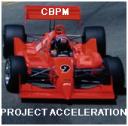The more I manage projects the more I realize that while it is simple it is not necessarily easy. Yes, I know. If you’ve been managing projects you know this already. But allow me to share my thoughts.
What’s the objective of project management? To deliver the results of the project (product, service, etc.) to a satisfied customer. Yes, there are other constraints (time, budget, scope…the golden triangle). But sometimes we focus too much on these three at the expense of the ultimate goal: a satisfied customer. If we focus on that goal, the rest is simple.
But it is not easy. Other items compete for our attention: “do you have a Gantt chart? Is it up to date?” “Where are we in the project?” “Will it be complete on time?” “John Doe thinks he is a stakeholder. How do we handle him?” “Your resources are being pulled into other higher priority projects in spite of what was promised.”
This is why it is not easy. So what do we do?
We focus on the goal of satisfying our customer and respond to all other challenges by framing them around this goal: how do we respond to this challenge in such a way that gets us closer to the goal? Thinking this way may lead us to what some think are counter-intuitive responses such as when some things slip. If we only react to the slip without assessing the impact to the goal we may overreact. I have faced this situation and by asking this exact question have realized that it was not a crisis.
What are your thoughts?


